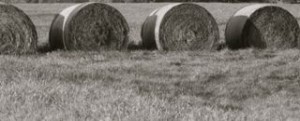 The most important aspect to managing a dairy herd is deciding what kind of food to put in front of the cows. To me, the first and most important question is: what kind of diet will make the cows thrive? A second very important question is, what kind of diet will allow the cows to consistently create enough quality milk day in and day out? The answers to these questions largely support each other, but like with most realities there are always exceptions and compromises to be able to meet different needs simultaneously.
The most important aspect to managing a dairy herd is deciding what kind of food to put in front of the cows. To me, the first and most important question is: what kind of diet will make the cows thrive? A second very important question is, what kind of diet will allow the cows to consistently create enough quality milk day in and day out? The answers to these questions largely support each other, but like with most realities there are always exceptions and compromises to be able to meet different needs simultaneously.
Lucky for us and the cows at Cricket Creek, we do not manage for the highest possible milk volume because all of our milk stays right here to be sold directly to people or to be turned into added value cheese and butter. We do not have to meet demands and endure the stresses of an artificial market. Even so, we do need to enable the cows to make enough milk for the demands of our real market and to cover our costs if we want to be sustainable in the long run as is the reality of real business.
So what do we put in front of the big ladies? Firstly, cattle have a four part stomach that, with the help of bacteria, fungi, and protists, is very good at breaking down plant material. So, we’ve got that down – they eat plants and all the soil, mineral, and microbes wrapped up in those plants. But only a little beyond that it can be pretty hotly debated about what really is best combination of plants and plant forms for them to eat. Yes, grass is part of an optimal diet for cows. But everything has to line up for that grass to provide for a thriving cow. Also, all “grass” is not created equal. Different grass species, as well as legumes and forbs counted under this “grass” umbrella, have different protein, carbohydrate, fat, and mineral profiles. And those nutritional profiles rapidly change throughout their growth stage. If a thriving, commercially producing cow is to eat nothing but grass, or preserved grass in the form of hay and haylage, tremendous preparation has to be on the human’s part. With years of promoting soil health, species diversification, grazing technique, and making excellent hay, an all grass diet can work, and I would think work very beautifully.
We humans, farmers, managers at Cricket Creek Farm have not had the years of knowledge and preparation on the same piece of land to build our soils, pastures, and hayfields to the point of eliminating the need to bring in some supplemental feed for ours cows, but there is not much more that we want other than a sustaining perennial system with decreasing inputs. For now, based on the milk demands of our markets and our goals, we can not generate enough energy (in the form of carbohydrates) from our own land to balance the cow’s nutrition correctly. I estimate the average dry matter intake (D.M.I) of our lactating cows to be 40-55 pounds a day. Right now, about 5 to 6 of those pounds is from cornmeal (starch) and molasses (sugar) and remaining is all grass (legumes, and forbs). We are heading in the direction we need and want to head. Now and forever, one of the most beautiful sights to me is cows chomping down on permanent diverse pasture and pausing to chew her cud.
